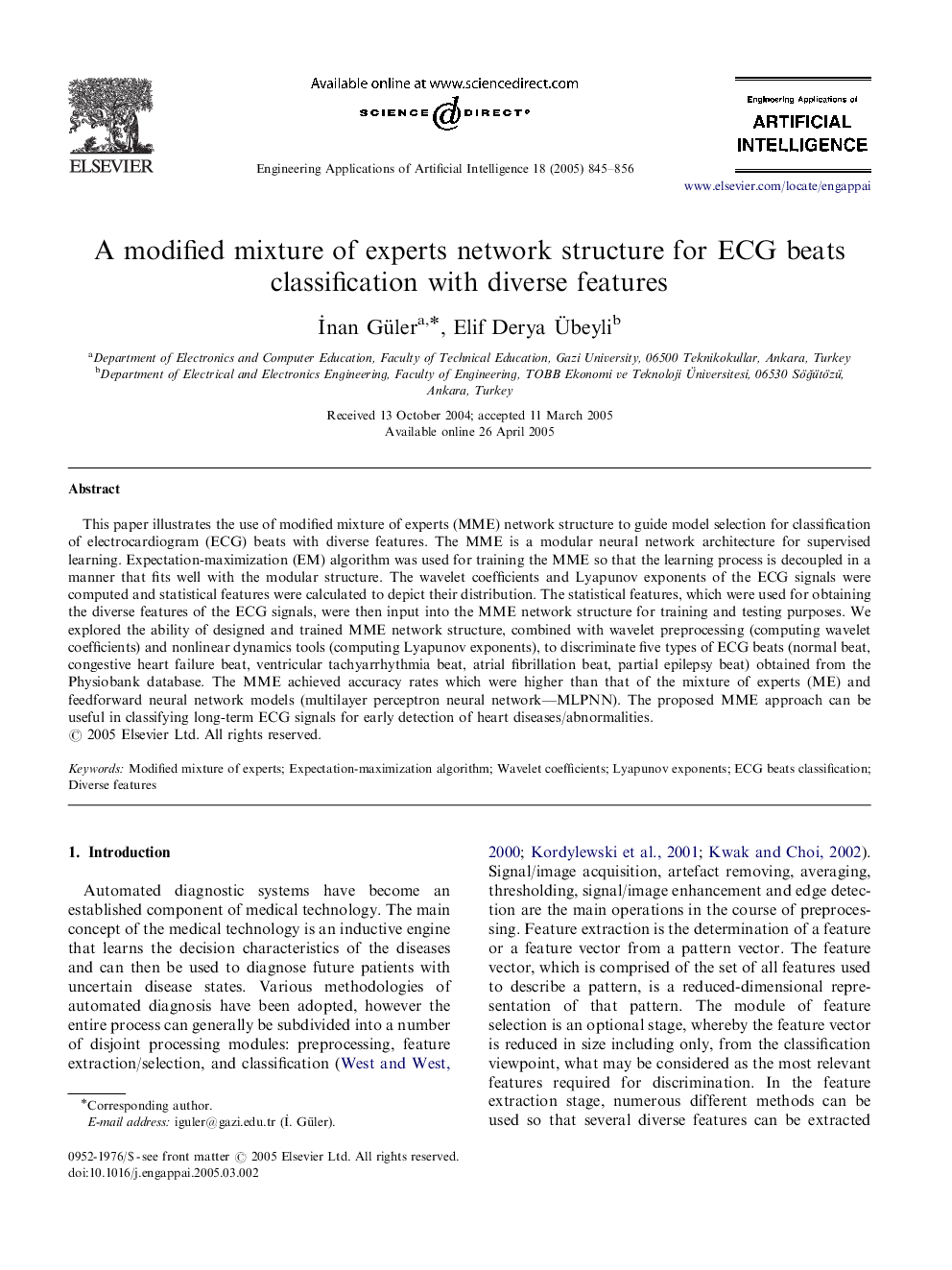| Article ID | Journal | Published Year | Pages | File Type |
|---|---|---|---|---|
| 9650519 | Engineering Applications of Artificial Intelligence | 2005 | 12 Pages |
Abstract
This paper illustrates the use of modified mixture of experts (MME) network structure to guide model selection for classification of electrocardiogram (ECG) beats with diverse features. The MME is a modular neural network architecture for supervised learning. Expectation-maximization (EM) algorithm was used for training the MME so that the learning process is decoupled in a manner that fits well with the modular structure. The wavelet coefficients and Lyapunov exponents of the ECG signals were computed and statistical features were calculated to depict their distribution. The statistical features, which were used for obtaining the diverse features of the ECG signals, were then input into the MME network structure for training and testing purposes. We explored the ability of designed and trained MME network structure, combined with wavelet preprocessing (computing wavelet coefficients) and nonlinear dynamics tools (computing Lyapunov exponents), to discriminate five types of ECG beats (normal beat, congestive heart failure beat, ventricular tachyarrhythmia beat, atrial fibrillation beat, partial epilepsy beat) obtained from the Physiobank database. The MME achieved accuracy rates which were higher than that of the mixture of experts (ME) and feedforward neural network models (multilayer perceptron neural network-MLPNN). The proposed MME approach can be useful in classifying long-term ECG signals for early detection of heart diseases/abnormalities.
Related Topics
Physical Sciences and Engineering
Computer Science
Artificial Intelligence
Authors
Ä°nan Güler, Elif Derya Ãbeyli,
